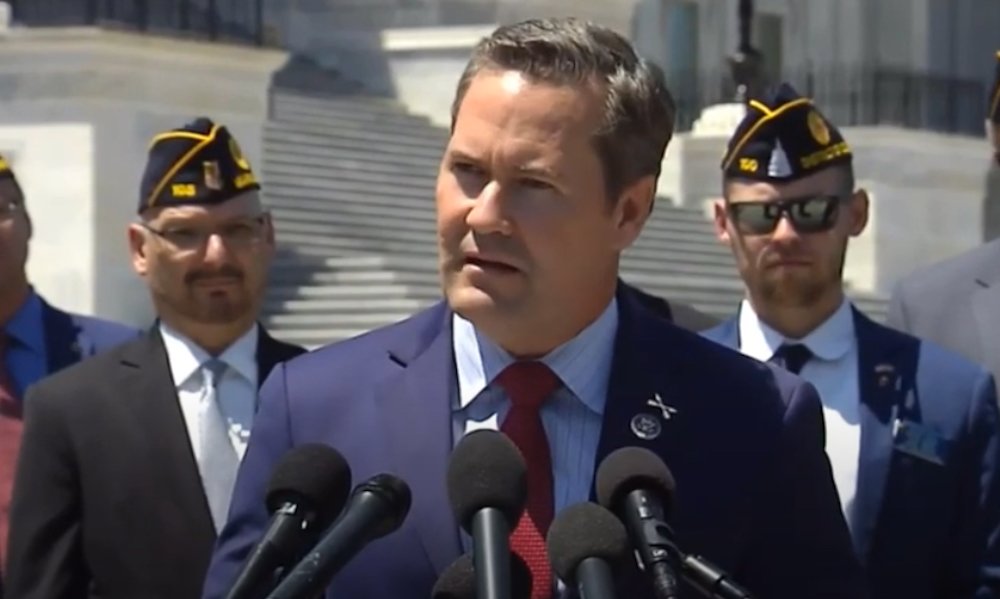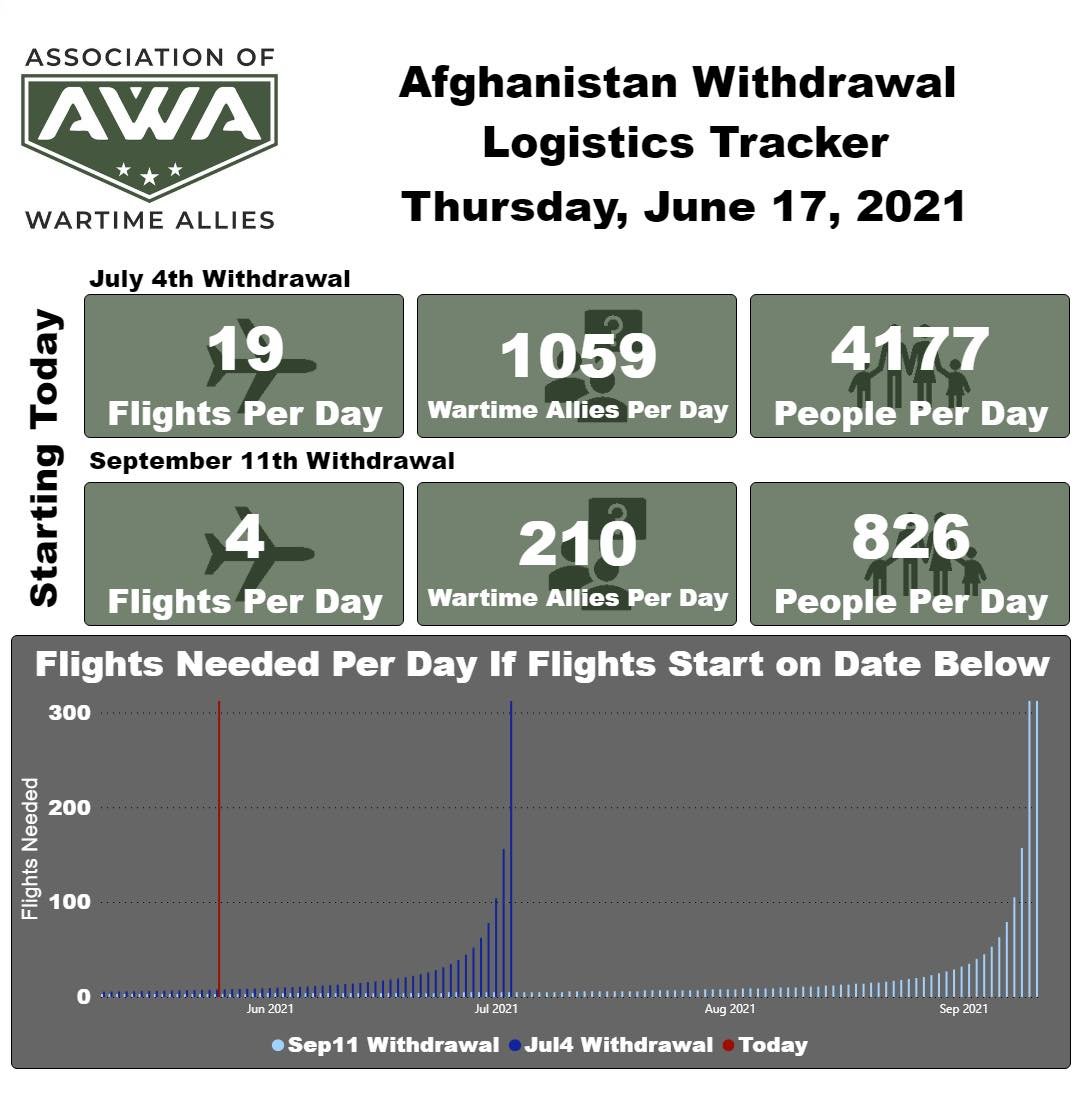‘Human-Rights Catastrophe in the Making’ — Without Presidential Action, Afghan Allies Could Be Doomed

Matthew Zeller, far left, in Afghanistan with his interpreter, Janis Shinwari, third from right, who later came to the US with Zeller’s help. Zeller has worked for years to bring interpreters and other Afghans to America. Photo courtesy of Matthew Zeller.
With the drawdown in Afghanistan more than halfway completed, calls for the Biden administration to evacuate interpreters and other Afghans who have worked with the US for nearly two decades are growing louder by the day.
Yesterday, members of Congress took to the steps of the Capitol to speak about a looming humanitarian crisis.
“When that last soldier goes wheels up out of Afghanistan, it is a death sentence for our local allies, the Taliban have made that clear in their words, and in their actions as they hunt these people down right now as we speak,” Rep. Michael Waltz, a Florida Republican and former Green Beret, said Wednesday.

The Special Immigrant Visa process takes, on average, more than 800 days. With some 18,000 Afghans stuck in a backlog at the State Department, less than 100 days remain before the Sept. 11 withdrawal date. The situation is dire but solvable, according to some who have worked on this issue for years.
Matt Zeller, a former Army intelligence officer who served in Afghanistan and is a member of the Association of Wartime Allies and a Truman Center fellow, the real number of applicants looking for visas is around 71,000 — an unmanageable number for current staff at the US Embassy in Afghanistan. Making matters worse, the Embassy has been shuttered for days during a large COVID-19 outbreak in Afghanistan, even though the staff there is vaccinated, Zeller said.
“Even if the State Department quadrupled the staff and had them work 24/7 full-time right to try to process these visas, it will still take an additional three years to get the current batch in. We just don’t have time,” Zeller told Coffee or Die Magazine.

Congress passed the 2009 Afghan Protection Act to ensure that Afghans who helped US and NATO forces would obtain American visas. An exemption allows Afghans to bypass the regular bureaucratic process. For this to happen, the secretary of state has to determine in writing that applicants are in “imminent danger” and should be “immediately removed” from Afghanistan.
“It’s already law. If we have no other means to save these people, they can all be issued what’s called humanitarian parole, and what that does is it allows them to get a boarding pass to get on a plane to fly to an American territory,” Zeller said.
The danger to those who have worked with the US also is something Zeller knows. In 2018, Gen. Habibullah Bashi, who Zeller closely worked with and called his “Afghan uncle,” was killed in a major Taliban attack in Sang-e-Masha, Afghanistan.
“They killed every male in his family,” Zeller said, before explaining that only a few of Bashi’s daughters were able to escape by fleeing to Canada.
Even though time is running short to prevent what Zeller and others describe as a looming humanitarian disaster, doing so remains logistically possible.
According to an Association of Wartime Allies document obtained by Coffee or Die Magazine, 19 flights a day would be required to remove all Afghans who are seeking visas from the State Department by July 4. If the US remains in Afghanistan until the proposed Sept. 11 deadline, that number drops to four flights per day. According to Zeller, the Biden administration needs to take action — and could do so with massive bipartisan support.

“Here’s the crazy thing, you have an administration that touts itself as this defender of and champion of human rights, that also espouses strong bipartisan solutions to America’s problems. It’s a human-rights catastrophe in the making, and the Biden administration is AWOL,” Zeller said.
While a bipartisan coalition has grown in Congress that advocates for action regarding Afghan allies, agencies across the federal government have been drawing up plans to fly them out of the country. In an interview earlier this week with Voice of America, the commander of US Central Command, Marine Gen. Frank McKenzie, backed a “complete plan” to evacuate Afghans who have helped the US. Still, authorization would need to come from the State Department.
The Defense Department “never lobbies, they never publicly advocate for a position right, but CENTCOM commander [McKenzie] publicly stated in a press briefing that we’ve got a plan we can execute to save these people and get them to Guam, we just haven’t been given the order,” Zeller said.

In 1975 under “Operation New Life,” the US evacuated about 130,000 refugees who faced imminent harm as the communist North Vietnamese overwhelmed Vietnam. The destination for many of these refugees was Guam. In a June 12, 2021, letter to President Biden, Guam’s governor, Lourdes Aflague Leon Guerrero, asked that the island be a landing point for those in need once again.
“Guam has stood ready to serve as a safe and secure route for this type of humanitarian effort throughout our history. And today, it is no different,” Guerrero wrote. “Due to the urgency and gravity of this matter, I would like to speak with you soon.”
According to a document from the Truman Center obtained by Coffee or Die Magazine, the cost of flying Afghan allies to Guam also would be relatively low. The Truman Center’s Zeller estimates that the average cost of flying 70,000 Afghans to Guam would be $9,981.65 per person, or a total cost of about $699 million — a relatively small slice of the overall defense budget.
“It sounds like a lot of money until you realize it’s an additional 8.3 hours of the DOD budget. But it’s a hell of a down payment in keeping Americans alive in future wars. Because this is how we’re going to show people that we keep our word,” Zeller said.

All the pieces are apparently in place to give America’s Afghan allies safe passage away from nearly certain death at the hands of the Taliban. A typically polarized Congress has come together in a bipartisan fashion to support the Afghans. Military leadership has stated publicly that the Defense Department stands ready to execute an evacuation plan that has already been formulated. At the same time, Guam stands ready to receive refugees. All that’s needed now is action by the Biden administration to put the plan into motion and save lives.
“Congress doesn’t have the authority to order the military to do this, and only [the Defense Department] has the resources and assets available to get this done,” Zeller said. “Which means this has to be an executive order from the commander in chief.”

James Webb served as a US Marine infantryman from 2005 to 2010, completing a combat tour in Iraq. He’s worked as a freelance writer and photojournalist covering US troops in Afghanistan, and Webb spent more than two years in the US Senate as a military legislative assistant and as the personal representative of a member on the US Senate Foreign Relations Committee.
BRCC and Bad Moon Print Press team up for an exclusive, limited-edition T-shirt design!
BRCC partners with Team Room Design for an exclusive T-shirt release!
Thirty Seconds Out has partnered with BRCC for an exclusive shirt design invoking the God of Winter.
Lucas O'Hara of Grizzly Forge has teamed up with BRCC for a badass, exclusive Shirt Club T-shirt design featuring his most popular knife and tiomahawk.
Coffee or Die sits down with one of the graphic designers behind Black Rifle Coffee's signature look and vibe.
Biden will award the Medal of Honor to a Vietnam War Army helicopter pilot who risked his life to save a reconnaissance team from almost certain death.
Ever wonder how much Jack Mandaville would f*ck sh*t up if he went back in time? The American Revolution didn't even see him coming.
A nearly 200-year-old West Point time capsule that at first appeared to yield little more than dust contains hidden treasure, the US Military Academy said.












